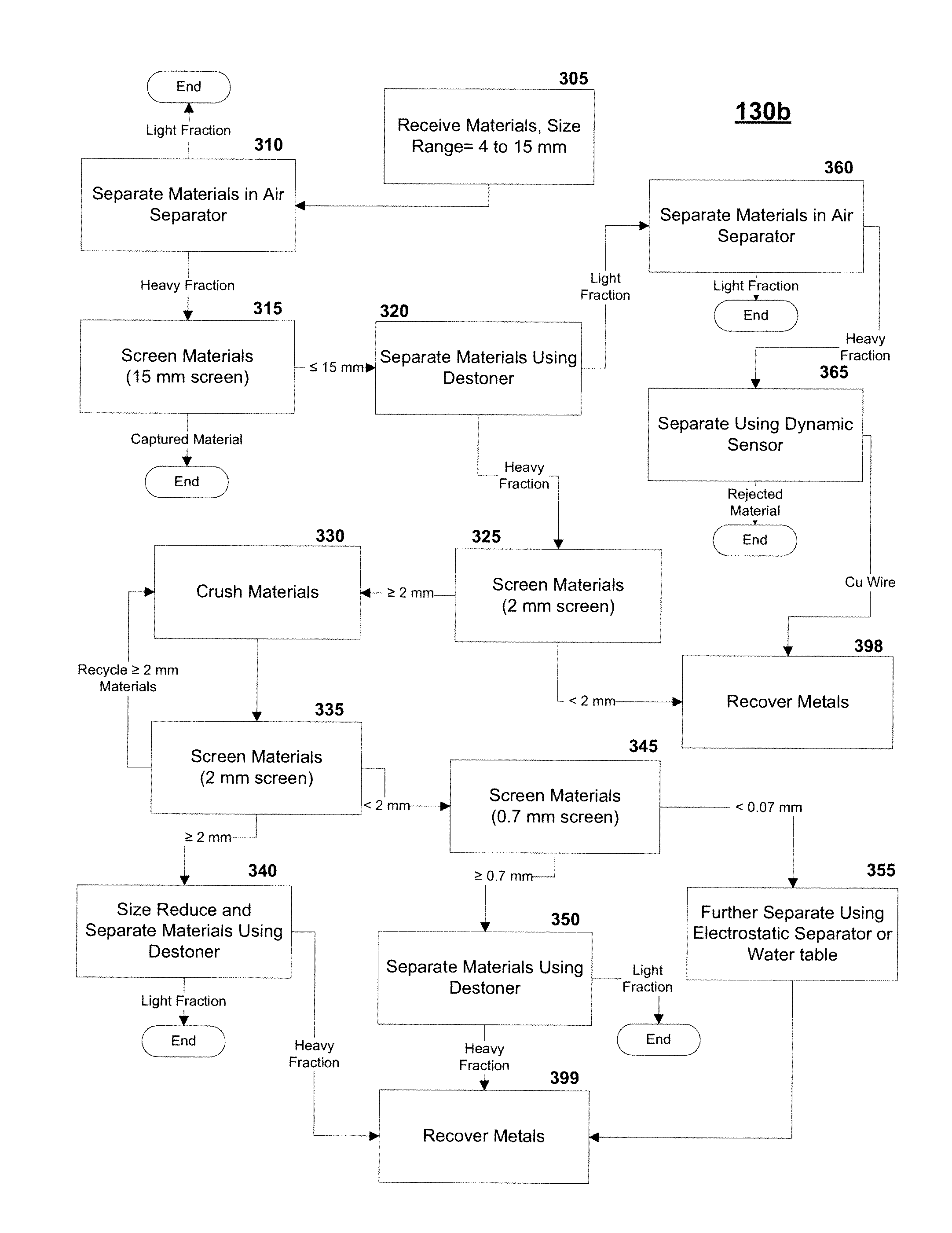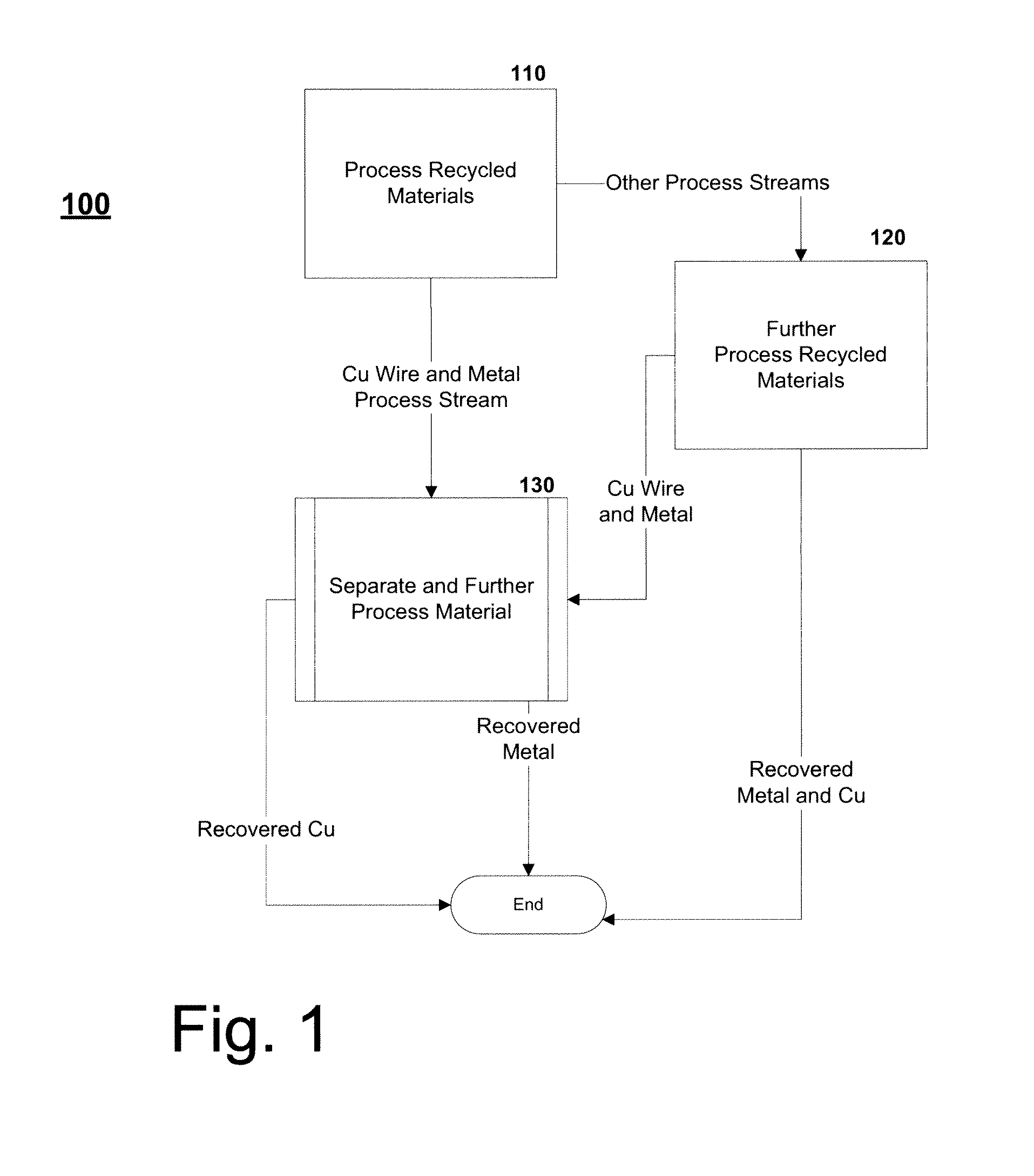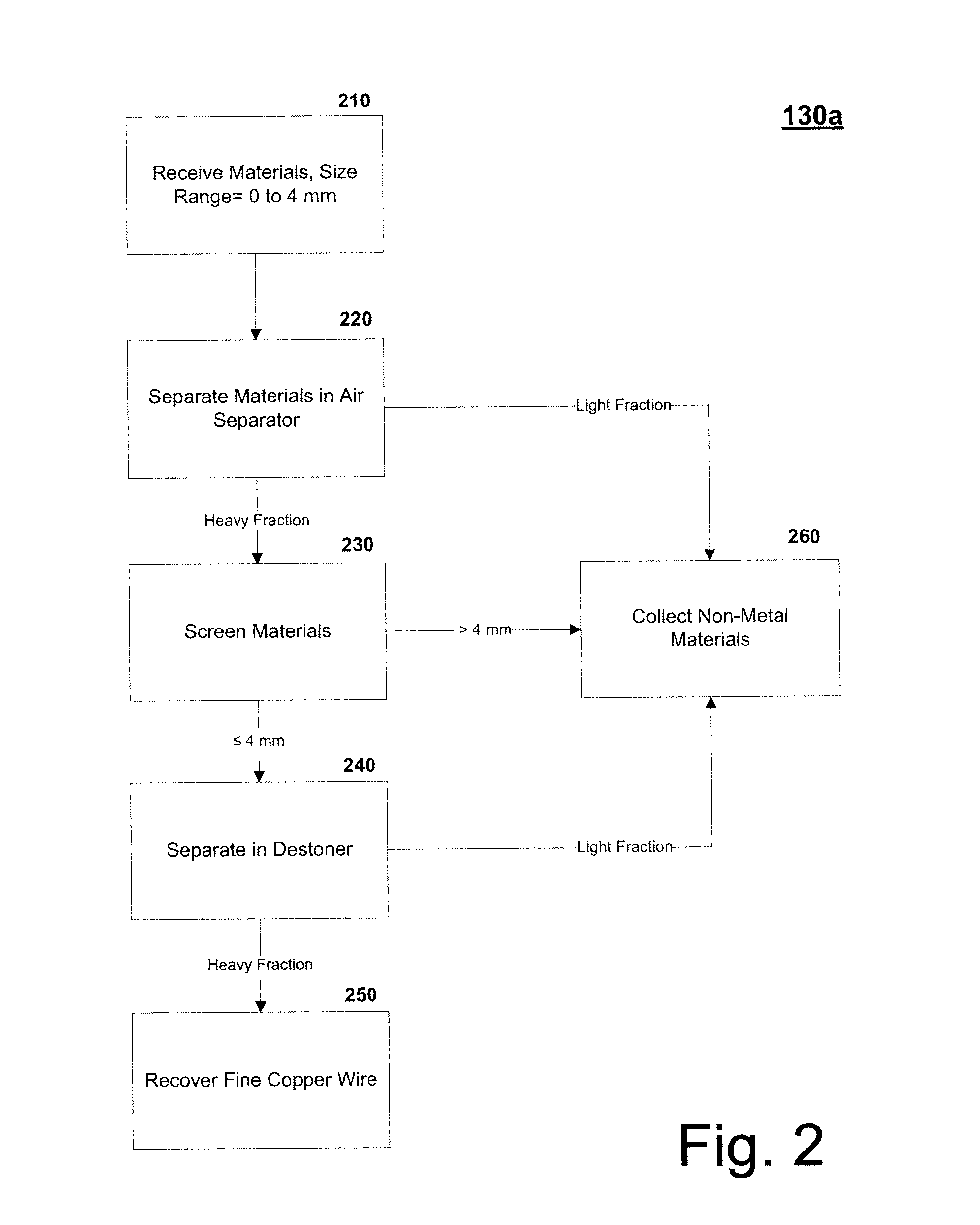Method and System for Separating and Recovering Wire and Other Metal from Processed Recycled Materials
a technology of recycled materials and recycling methods, applied in the direction of gas current separation, centrifuges, applications, etc., can solve the problems of inability to effectively sort waste materials containing diverse materials, and inability to meet the needs of customers, etc., to achieve cost-effective, efficient, and facilitate revenue recovery
- Summary
- Abstract
- Description
- Claims
- Application Information
AI Technical Summary
Benefits of technology
Problems solved by technology
Method used
Image
Examples
Embodiment Construction
[0020]Exemplary embodiments of the present invention provide systems and methods for recovering non-ferrous metals, such as copper, employing a primarily dry process and in a highly concentrated form.
[0021]FIG. 1 depicts a process flow diagram 100 for processing recycled materials in accordance with an exemplary embodiment of the present invention. Referring to FIG. 1, at step 110, recycled material waste streams, or residues, such as ASR, WSR, and WEEE, are processed to separate and concentrate certain recoverable materials from the residues. Any combination of known or later-developed recycling processes can be used to separate and extract these materials. The results of these processes will be material streams that are concentrated in a particular type of material. One such process stream is concentrated in copper and other metals. This stream will typically have copper wire, other non-ferrous metals, and some (typically 4 to 5 percent) ferrous metals. The typical concentration o...
PUM
| Property | Measurement | Unit |
|---|---|---|
| size | aaaaa | aaaaa |
| size | aaaaa | aaaaa |
| size | aaaaa | aaaaa |
Abstract
Description
Claims
Application Information
 Login to View More
Login to View More - R&D
- Intellectual Property
- Life Sciences
- Materials
- Tech Scout
- Unparalleled Data Quality
- Higher Quality Content
- 60% Fewer Hallucinations
Browse by: Latest US Patents, China's latest patents, Technical Efficacy Thesaurus, Application Domain, Technology Topic, Popular Technical Reports.
© 2025 PatSnap. All rights reserved.Legal|Privacy policy|Modern Slavery Act Transparency Statement|Sitemap|About US| Contact US: help@patsnap.com



